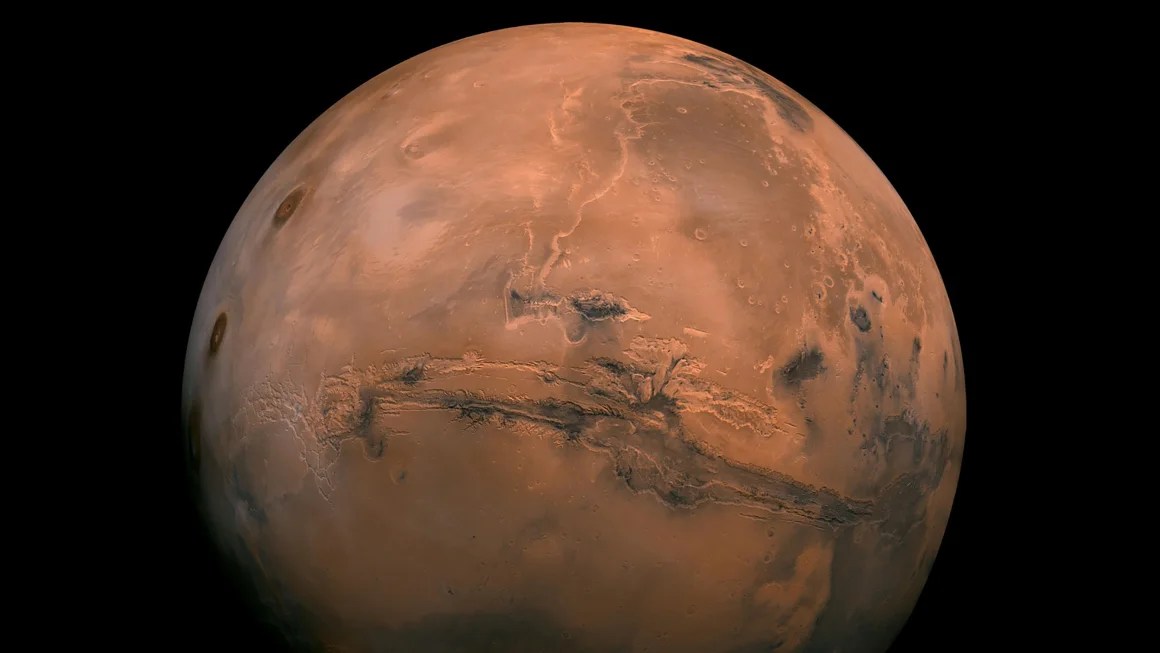(CNN) — Mars may be about 140 million kilometers from Earth, but the red planet influences our deep oceans by helping to push “giant eddies,” according to new research.
Scientists analyzed sediments, drilled at hundreds of deep-sea sites over the past half-century, to look back tens of millions of years into Earth's past, in an attempt to better understand the strength of deep ocean currents.
What they found surprised them.
The sediments revealed that deep-sea currents weakened and strengthened over 2.4 million years of climate cycles, according to the study published Tuesday in the journal Nature Communications.
Adriana Dutkiewicz, co-author of the study and a sedimentologist at the University of Sydney, said scientists did not expect to discover these cycles and that there was only one way to explain them: “They are related to cycles in the interactions of Mars and Earth.” It orbits the sun,” he said in a statement. The authors say this is the first study to prove these links.

(a pot)
The two planets affect each other through a phenomenon called “resonance,” which occurs when two orbiting objects gravitationally push and pull on each other, which is sometimes described as a type of harmony between distant planets. This interaction changes the shape of their orbits, affecting their proximity to the ring and their distance from the sun.
For Earth, this interaction with Mars leads to periods of higher solar energy (i.e. a warmer climate) and these warmer cycles are associated with stronger ocean currents, according to the report.
While these 2.4 million-year cycles influence ocean warming and currents on Earth, they are natural climate cycles and are not related to the rapid warming the world is experiencing today as humans continue to burn fossil fuels that warm the oceans. Professor of Geophysics at the University of Sydney and co-author of the study.
The authors describe these currents, or eddies, as “giant eddies” that can reach the deep ocean floor, eroding the seafloor and generating large accumulations of sediment, such as snow drifts.
Scientists were able to map these powerful eddies through “breaks” in the sediment cores they analysed. Deep-sea sediments accumulate in continuous layers during calm conditions, but strong ocean currents change that, leaving a clear mark of their presence.
Because satellite data that can clearly map changes in ocean circulation has only been available for a few decades, sediment samples, which help build a picture of the past going back millions of years, are very useful for understanding changes in circulation in a warmer climate. Mueller told CNN.
If current human-induced global warming continues on its current path, “this effect will dwarf all other processes for a long time,” Mueller said. But the geological record still provides us with valuable information about how the oceans will function in a warmer world.
The authors suggest that it is possible that these eddies could help mitigate some of the effects of the potential collapse of the Atlantic Overturning Circulation (AMOC), an important ocean circulation that acts like a giant ribbon transporting warm water from the ocean. Tropical regions to the distant North Atlantic.
Scientists have been increasingly sounding the alarm about the health of this critical flow system. There are fears that it may be showing early signs that it is on its way to collapse, as rising global temperatures warm the oceans and melt ice, upsetting the delicate balance of heat and salt that determines the strength of the AMOC.
The collapse would have catastrophic climate consequences, including a rapid drop in temperatures in some places and a rise in others.
“Our work says nothing about what may or may not happen to AMOC,” Mueller said. “Our view is that even if the AMOC were to stop, other ocean mixing processes would still be at work, although their effects would be very different.”
It is feared that halting the AMOC would cause oxygen-rich surface waters to stop mixing with deeper waters, leading to a stagnant ocean largely devoid of life. “Our results suggest that denser deep-ocean eddies in a warmer world may prevent such ocean stagnation,” he said.
The study's discovery of a 2.4-million-year cycle in marine sediments is noteworthy, said Joel Hirschi, associate head of marine systems modeling at the UK's National Oceanographic Centre, who was not involved in the research. He added that the methodology is sound and it is possible to link to Mars.
But he told CNN that “the proposed link to ocean circulation is speculative, and evidence that deep-ocean circulation associated with eddies is stronger in warm climates is scarce.”
He said that satellite observations have shown that these eddies have become more active in recent decades, but the currents do not always reach the ocean floor, which means they cannot prevent sediment accumulation.
The study's authors said in a statement that it is still unclear exactly how the various processes that affect deep ocean currents and marine life will evolve in the future, but they hope that this new study will help build better models of future climate outcomes.

“Proud web fanatic. Subtly charming twitter geek. Reader. Internet trailblazer. Music buff.”

:quality(85)/cloudfront-us-east-1.images.arcpublishing.com/infobae/TEQF6EONZRFGLLLDIDD4L2O4EE.jpg)

:quality(75)/cloudfront-us-east-1.images.arcpublishing.com/elcomercio/XU32LRAEZFDDPNVHLFU3CKVBYY.jpg)


More Stories
How to create 3D videos with my iPhone, it will be very useful even for your business
NASA discovers an anomaly in the Earth’s magnetic field that could have serious consequences for humans
Can the Earth be divided into two parts?